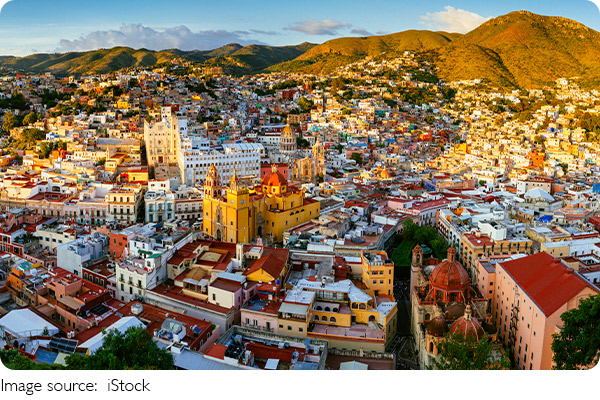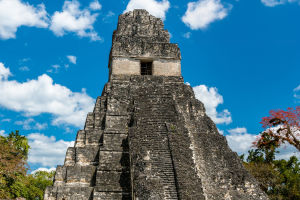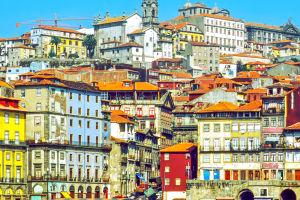Colors Beneath the Hills

Some cities charm you from the moment you arrive. Guanajuato doesn't—at least not immediately. First, it confuses you. One minute you're above ground, the next you're spiraling down into a maze of underground tunnels that somehow serve as main roads.
But then you exit onto a street like Callejón del Beso and look up—at windows draped in bougainvillea, at staircases spilling over with color—and it clicks. You've found something special.
Guanajuato isn't like other cities. Tucked into a bowl of mountains in central Mexico, it's part fairytale, part labyrinth, part open-air art installation. In just a few days, you can walk through a kaleidoscope of pastel homes, wander eerie museums, and eat tacos you'll remember months later. If you like your trips bright, bold, and a bit surreal—this place delivers.
Start Below the City: Guanajuato's Underground Streets
Most cities have a grid. Guanajuato has a tunnel system.
Built on top of old riverbeds to reduce congestion, the underground roads here are still active thoroughfares—with full-size cars, streetlights, even intersections.
Tip: Take a taxi into town and ask the driver to enter via the tunnels—it's a disorienting but oddly beautiful way to arrive. And it makes emerging into daylight on the Plaza de la Paz feel like stepping into a painting.
For the Curious: Museo de las Momias (Mummy Museum)
Yes, it's weird. Yes, it's morbid. But the Museo de las Momias, just north of the city center, is the most famous—and one of the most unforgettable—stops in Guanajuato.
• Entry fee: ~$4.50 USD
• Hours: 9 a.m. – 6 p.m. daily
• Getting there: 15-minute walk uphill from Jardín de la Unión or short taxi ride
These naturally mummified bodies were unearthed when families couldn't pay burial fees in the 19th century. Many still wear their original clothes. The museum is sobering, not sensational—it invites you to confront time, death, and the strange preservation of the past.
Local insight: Try visiting early in the day when it's less crowded.
Walk the Alleys: Callejones and Staircases
Guanajuato isn't a city you navigate with online Maps. It's better explored with a sense of direction—and a willingness to get lost.
Wander the narrow callejones (alleyways), where no two buildings are the same color and every staircase leads to a new view. The most famous is Callejón del Beso, where balconies from opposite houses are so close lovers can kiss across the alley.
Traveler tip: The street gets crowded mid-day with photo tours. Try going around 8 a.m. for a quieter, more magical experience.
Along the way, you'll stumble upon mini plazas, kids playing marbles, and street musicians rehearsing under archways. The entire city feels like an outdoor theater.
Plan for October: Festival Internacional Cervantino
If you can swing it, visit Guanajuato in October. The Cervantino Festival—named after Don Quixote author Miguel de Cervantes—transforms the city into a performing arts hub.
• Duration: Usually mid–late October, around 3 weeks
• Events: Street plays, contemporary dance, classical music, visual arts, and more
• Venues: Everything from historic buildings to open-air stages and tunnels
Shows range from free puppet performances in the park to ticketed operas in the majestic Teatro Juárez. It's a cultural overload in the best possible way.
Good to know: Accommodations book out quickly during the festival. If you're visiting during Cervantino, reserve at least 2–3 months in advance.
What to Eat: Small Stalls, Big Flavor
Forget fancy restaurants. Guanajuato's flavor lives on the street.
1. Elote (street corn) – Grilled or boiled, then topped with chili powder, lime, and non-dairy cheese or mayo. Usually $1–$1.50 USD.
2. Taco stalls near Mercado Hidalgo – Look for stands with long lines. Many offer plant-based fillings like cactus (nopales), potatoes, and squash blossoms.
3. Churros from Plaza San Fernando – Hot, crispy, and dipped in cinnamon sugar. Ideal evening snack.
Hidden gem: A tiny spot near the funicular entrance serves tacos with house-made tortillas and creamy green salsas. No menu, no fuss—just grab a stool and eat.
Where to Stay: Live Among the Colors
The best base in Guanajuato is in the historic center—preferably near Jardín de la Unión or Teatro Juárez. From here, you can walk almost everywhere.
• Mid-range: Look for small guesthouses with rooftop views: $75 - 150 USD.
• Budget: Hostels around Plaza Baratillo offer dorms and private rooms with character. Dorm Bed: $10 - 25 USD, Private Room: $40 - 60 USD.
Tip: Avoid staying too high up the hills unless you're comfortable climbing 10+ flights of stairs daily. The views are great, but the trek gets tiring fast.
Getting There & Getting Around
• By air: The closest airport is Bajío International (BJX), ~30 minutes by taxi ($25–30 USD).
• By bus: Direct routes from Mexico City (~5 hours, ~$30 USD).
• In-town: Guanajuato is best explored on foot. Local buses and taxis are available, but most central areas are pedestrian-only or too narrow for cars.

Let It Be Strange—and Beautiful
Guanajuato doesn't try to be perfect. Streets don't run straight. Murals suddenly appear on alley walls. You'll hear bells at midnight and wake up to roosters, even in the city center.
But that's the charm: it's messy in a way that feels alive. Walking here doesn't just get you from place to place—it opens a little window into another pace of life. One where color matters, stories echo in the walls, and time slows just enough for you to feel it.
So if you're tired of cities that all blur together, let Guanajuato surprise you. You might not find what you expected—but you'll remember what you did.
-
 Guatemala Travel GuideDiscover Guatemala: Ancient Maya Ruins, Volcano Hikes, and Colorful Lakeside Towns—Everything You Need to Know Before Visiting!
Guatemala Travel GuideDiscover Guatemala: Ancient Maya Ruins, Volcano Hikes, and Colorful Lakeside Towns—Everything You Need to Know Before Visiting! -
 More Real Than You ThinkSkip the Lisbon crowds—slow down and live like a local in Porto!
More Real Than You ThinkSkip the Lisbon crowds—slow down and live like a local in Porto! -
 Untouched JapanEscape crowds with secret hot springs and ancient pilgrimage routes!
Untouched JapanEscape crowds with secret hot springs and ancient pilgrimage routes!